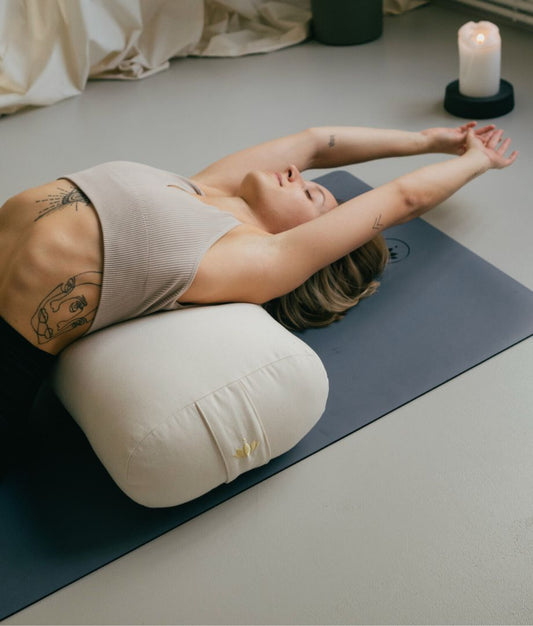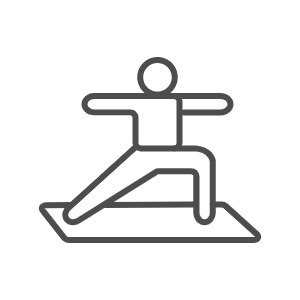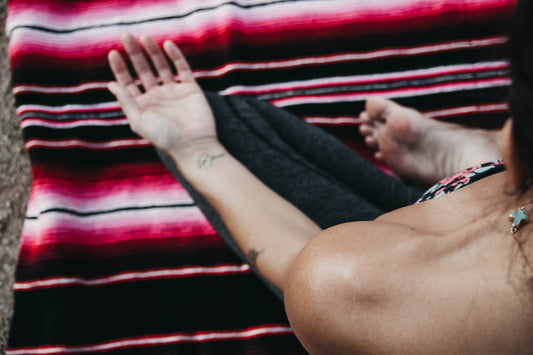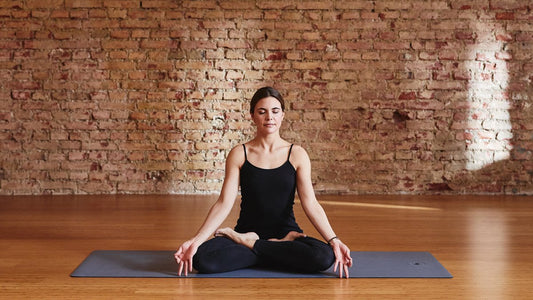
Set-Offers
Save when you buy a set
Shopping cart
Your shopping basket is empty
Yoga

Meditation
Bundles

| Yoga
Iyengar Yoga bears this name thanks to its inventor, BKS Iyengar . In Iyengar Yoga practice you will find typical elements of Hatha Yoga , so the style focuses on physical exercises. Tools also play a major role. You can find out here which props are used and which exercises are practiced in Iyengar Yoga !

Iyengar Yoga focuses on body movements and pranayama (breathing techniques) . This style of yoga thus joins the tradition of Hatha Yoga and its basis Ashtanga Yoga. Over 200 asanas and 14 breathing exercises are used in Iyengar Yoga. Standing, stretching, relaxing or rotating asanas: everything is included here!
The precise execution of the individual poses is important in Iyengar Yoga. This alone is supposed to create a relaxing effect, so meditation as a yoga element is in the background with this style. The very strict Ashtanga Yoga resonates insofar as Iyengar Yoga also attaches great importance to the precise execution of the asanas.
BKS Iyengar himself systematically studied yoga poses and breathing exercises for many years and explicitly included props in his yoga style . By the way, only trained yogis with Iyengar's certificate are allowed to call themselves Iyengar teachers.
Thanks to various equipment that is expressly permitted, Iyengar Yoga is suitable for everyone. Whether you are a beginner or an advanced player, there is an Iyengar variant for everyone. Even with ailments or injuries, Iyengar Yoga can be practiced.
Of course, there is a reason why so many accessories can be used. The supporting props allow you to perceive the asanas much more intensively and take even more relaxation with you from the practice. For optimal assistance you can choose from:
You can even support your asanas with a normal chair or a wall. All that matters is that you get the support you need! On the other hand, this does not mean that you can only do Iyengar Yoga with aids. If you don't need Block and Co., that's absolutely fine.
There is no continuous flow in Iyengar Yoga, so you can vary relatively freely between individual asanas. You should just know that the exercises in this style are often held much longer than in a regular hatha yoga session. With the following exercises you can get a taste of Iyangar Yoga!

Standing with both feet firmly planted on the mat, bend your left arm backwards so that your hand could touch your left shoulder blade. Now reach over your right shoulder with your right hand.
Your two hands interlock and your forearms form a straight oblique line.
You sit on the mat and lean your back against a wall or meditation bench . Place a strap under the soles of your feet and hold it with both hands while lifting your legs at right angles to your torso. Stay in this V position for 1-5 minutes while continuing to hold the strap. Alternatively, you can also rest your calves on the seat of a chair.
Lie on your back with your feet hip-width apart. Raise your pelvis slightly and place one or two yoga blocks under your buttocks. Now put a yoga strap under your heels, keep your back straight and pull your shoulders away from your ears as much as possible. Now slowly push your heels away from your buttocks so that you can stretch out your legs.
You can hold the position for up to 10 minutes. If you have trouble stretching your legs, you can omit the harness and just leave your pelvis elevated. After the asana, remove the blocks and stay straight and relaxed for a few more minutes.

You're back on the mat. This time, reach behind your body with both arms and bring your palms together.
Intermediate users can get their hands touching from fingertips to palm of the hand, but as a beginner you may need some practice.
Set a padded stool so that it's just behind your head when you're lying on your back. Place your mat against a wall or, alternatively, place another chair at waist height. Your elbows are relaxed next to your head and you lift your feet over your head.
Your hips will be supported by the wall or chair and your shins will rest on the stool. Hold the position for 1-2 minutes. Of course, as an advanced yogi, you can omit the props and place your feet fully on the ground.
As you can see, there are many ways to make the Iyengar asanas easier for you with props . This is what makes Iyengar Yoga so accessible to all yogis. Beginners can practice as well as advanced users. To ensure that you really do all the asanas correctly, you should learn Iyangar Yoga in a course with professional guidance .

Meditation, isn't that the thing where a Buddhist monk sits lonely and still somewhere? Yes and no, because various meditation techniques have the...
Continue reading
Meditating - what does it actually do? Skeptics often ask this question, because at first glance meditation seems to be nothing more than "just si...
Continue reading
There are no comments yet. Be the first to leave a comment!